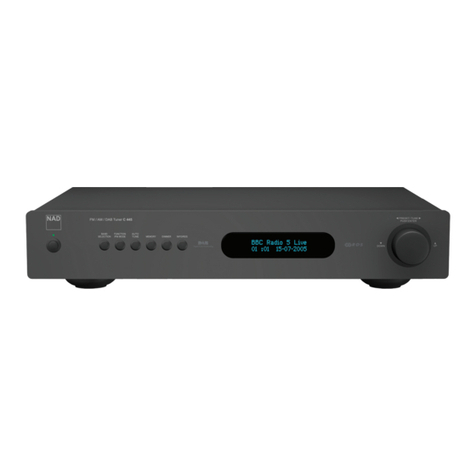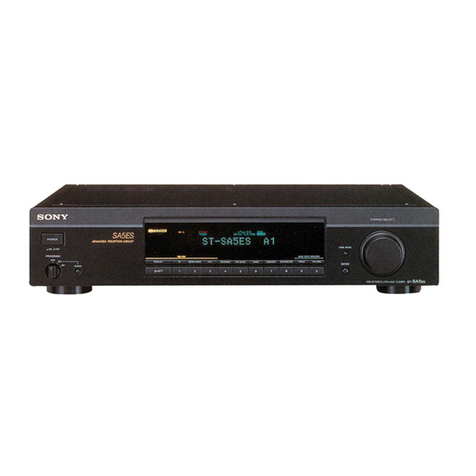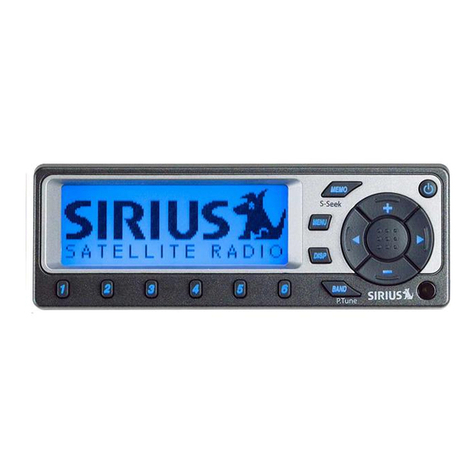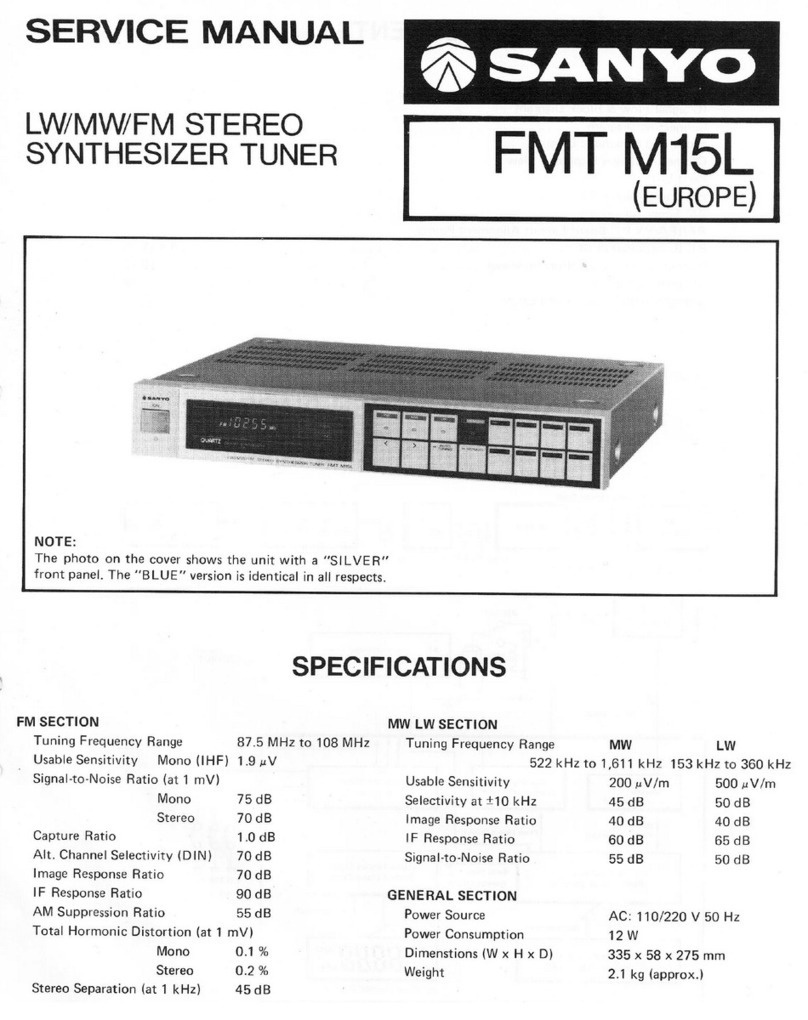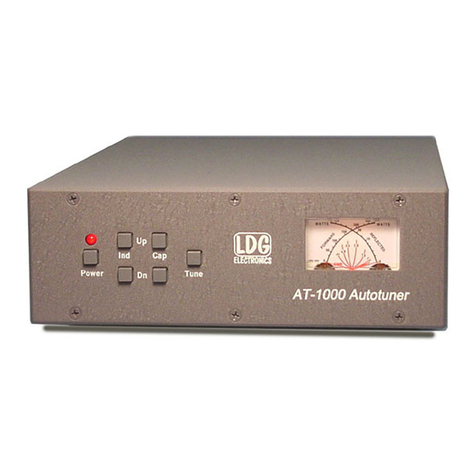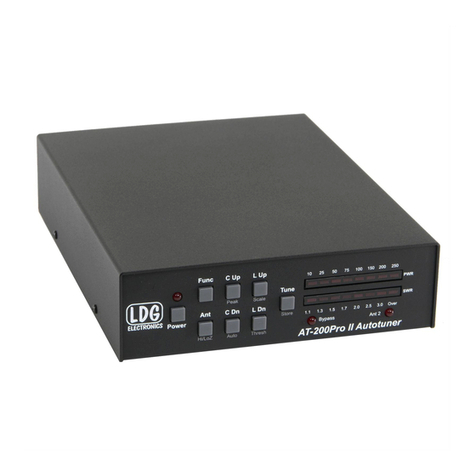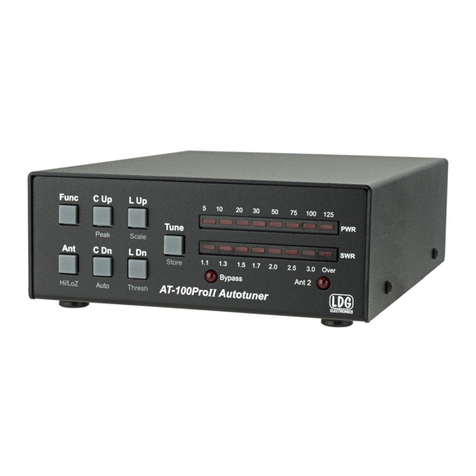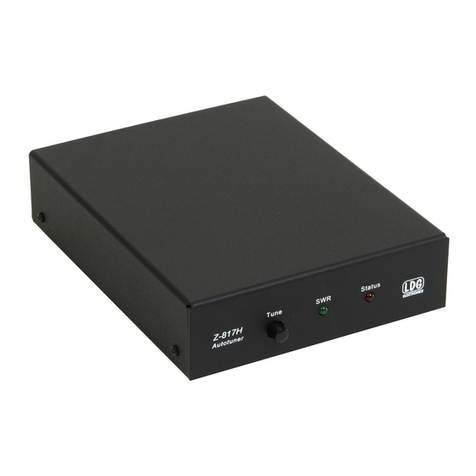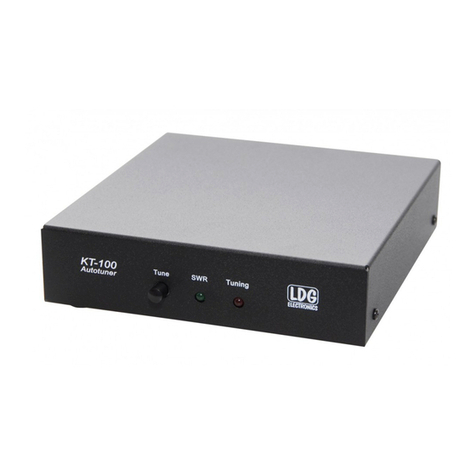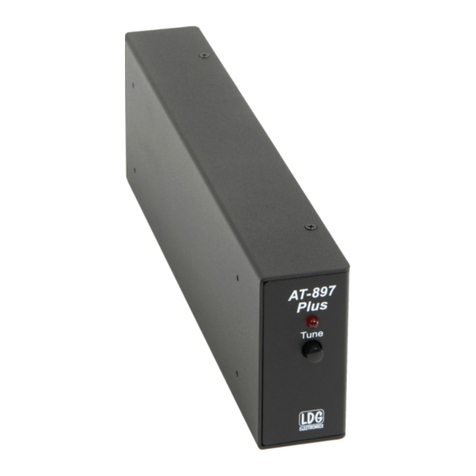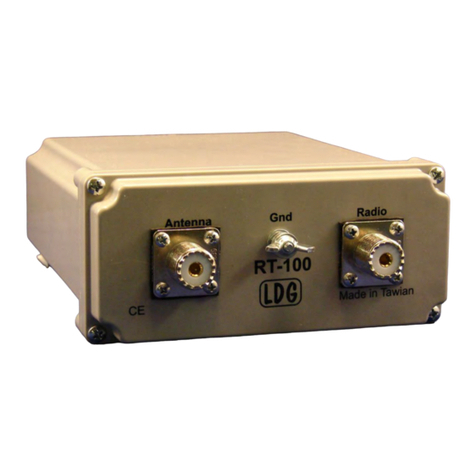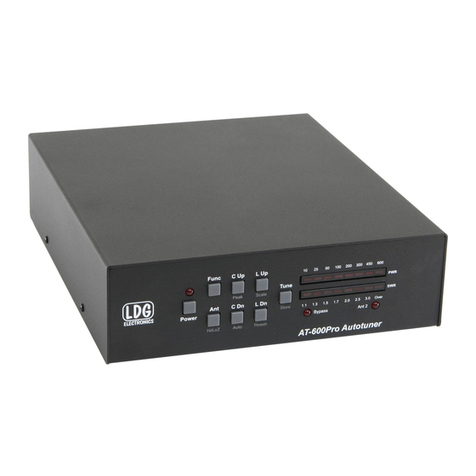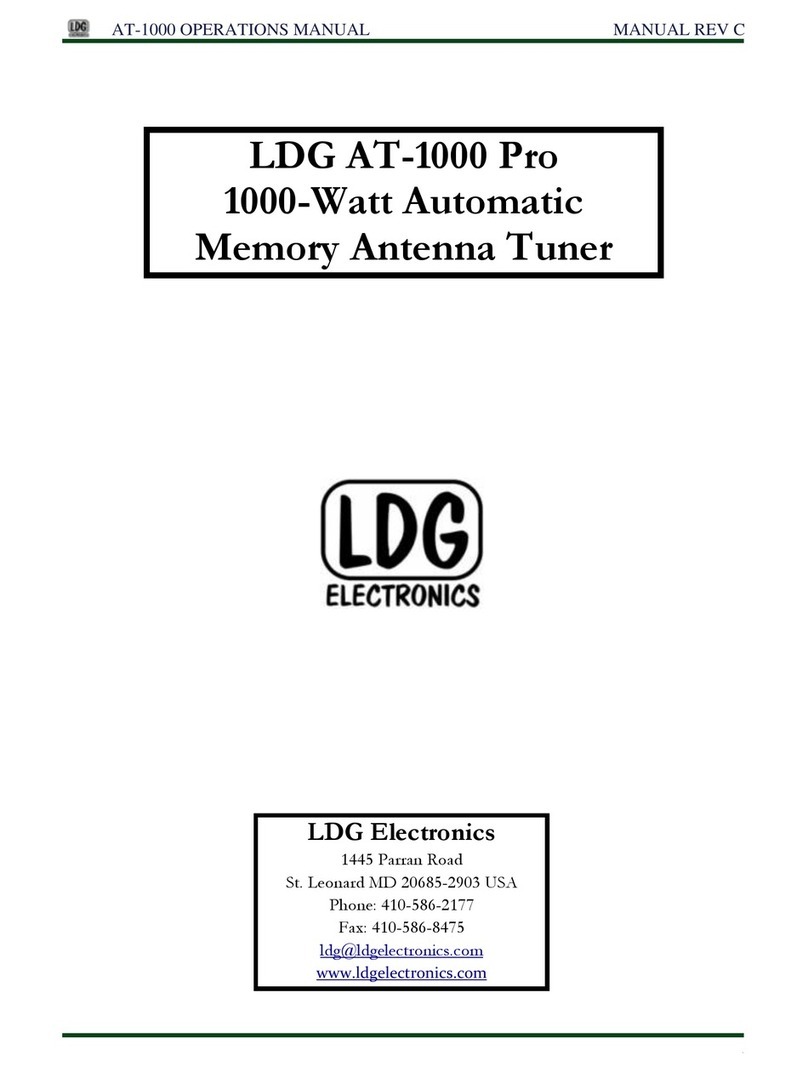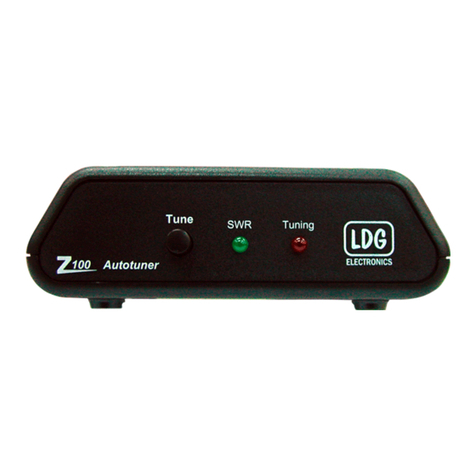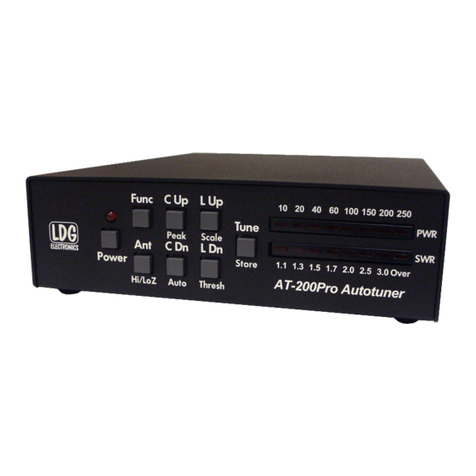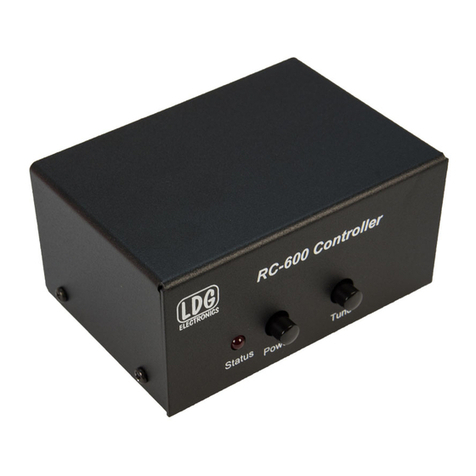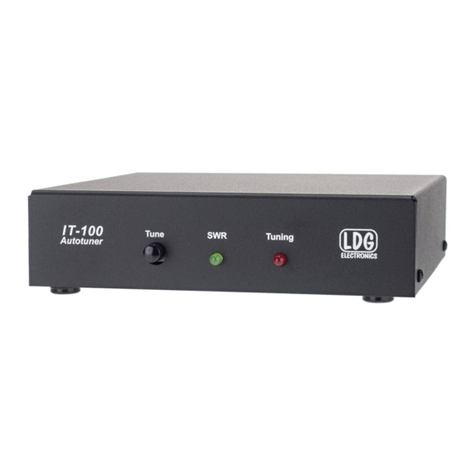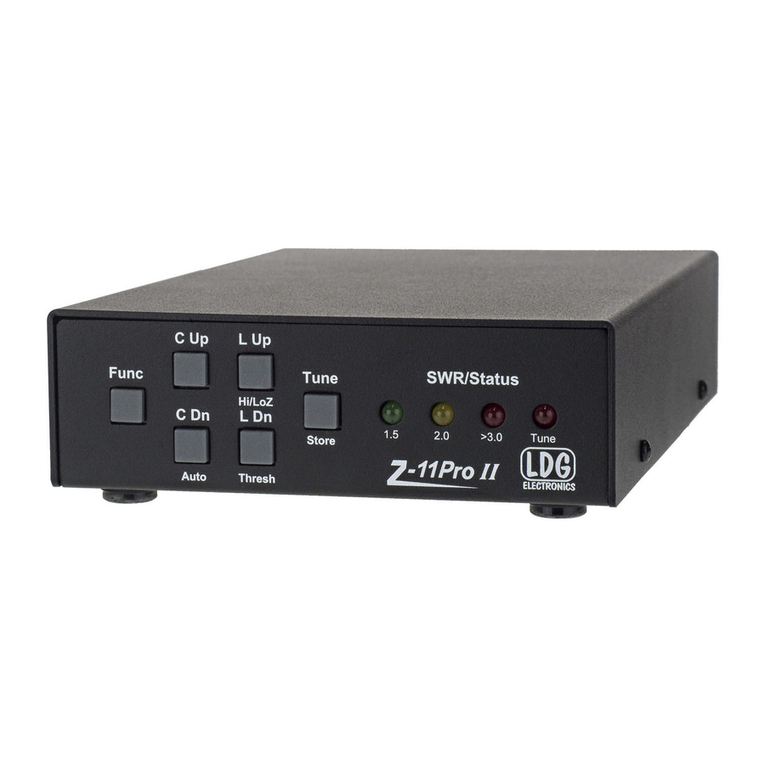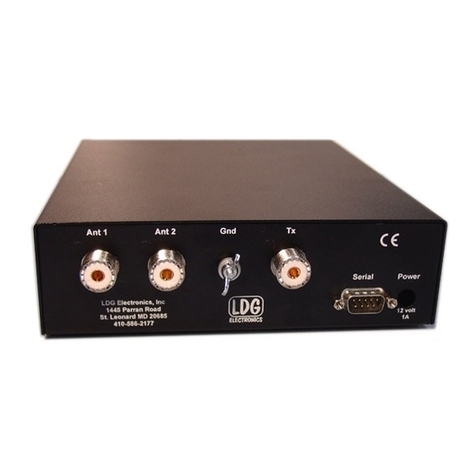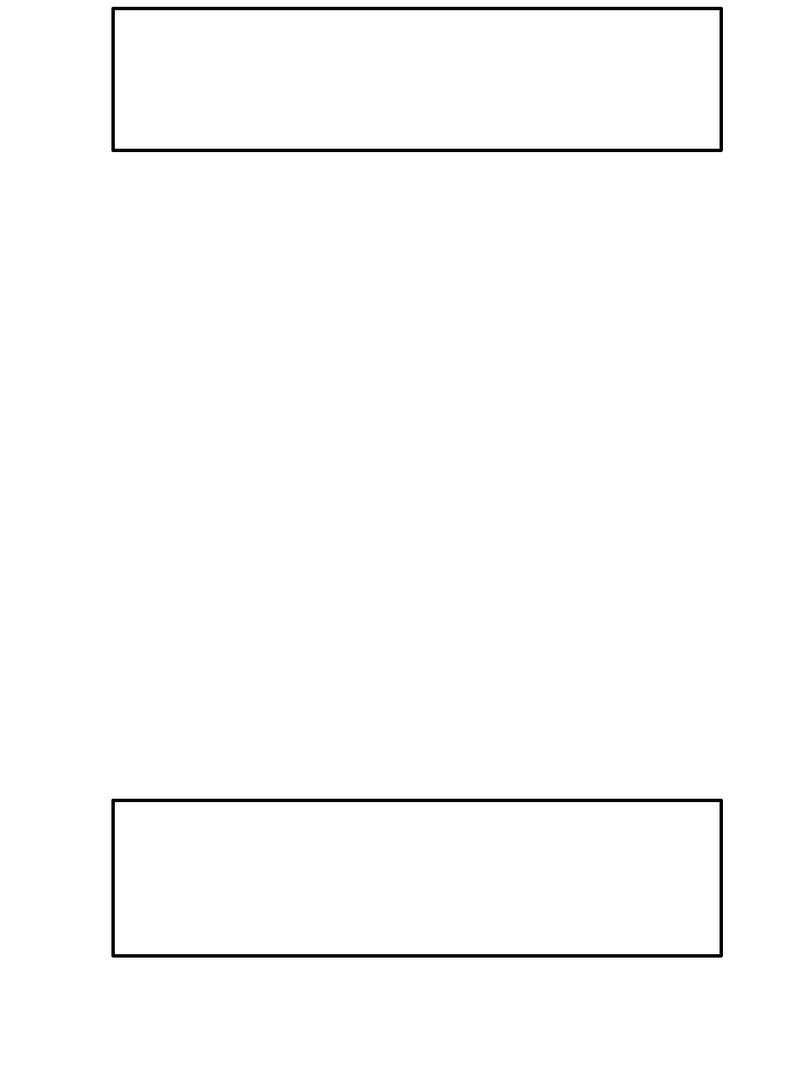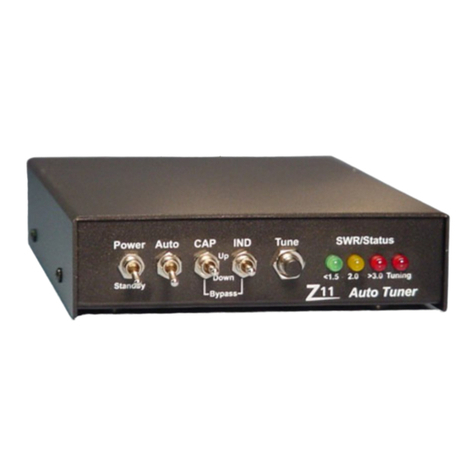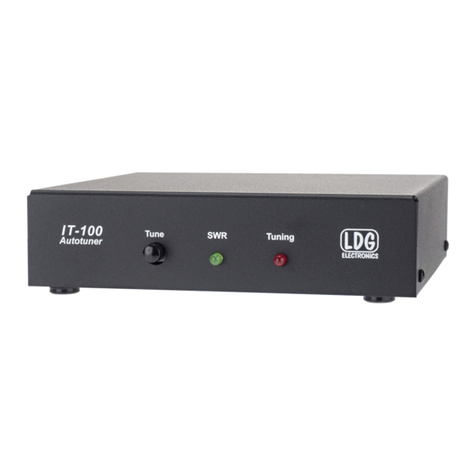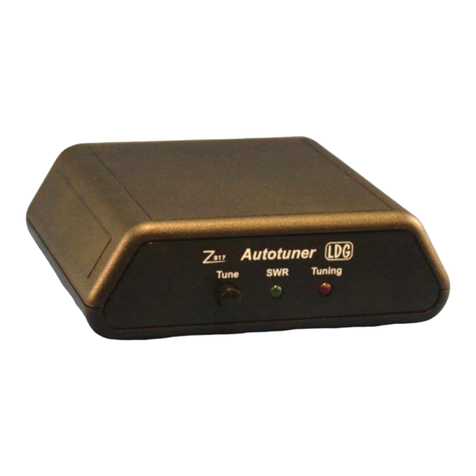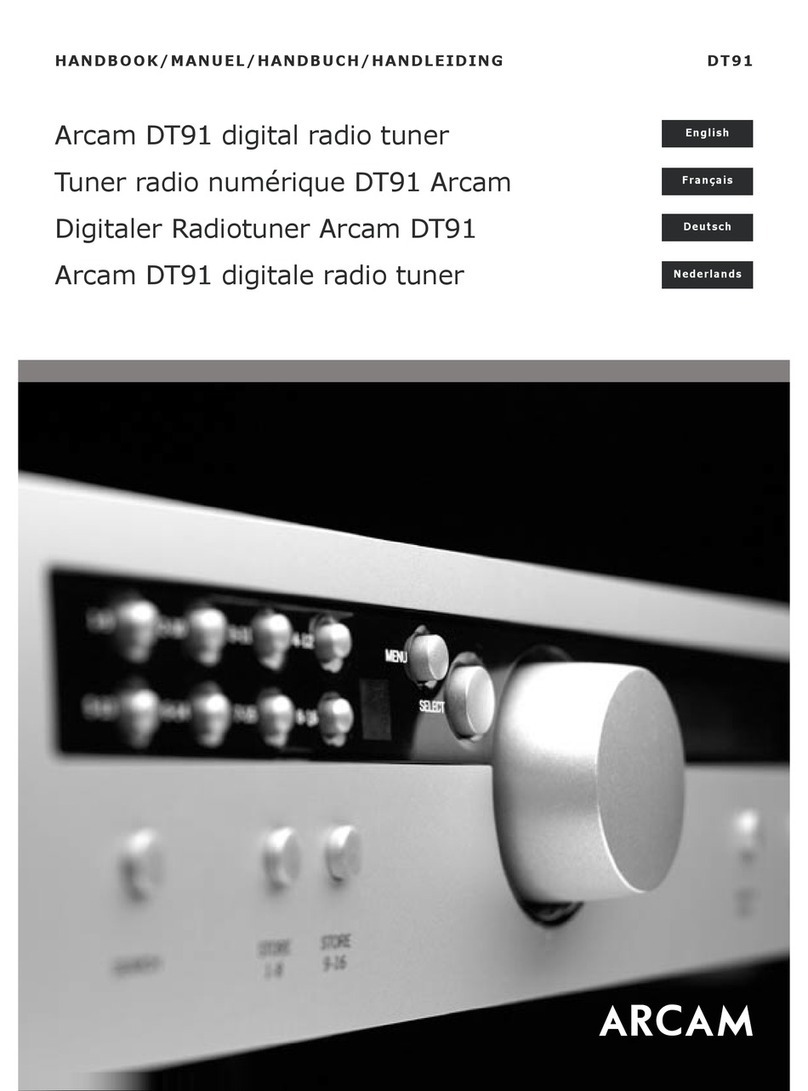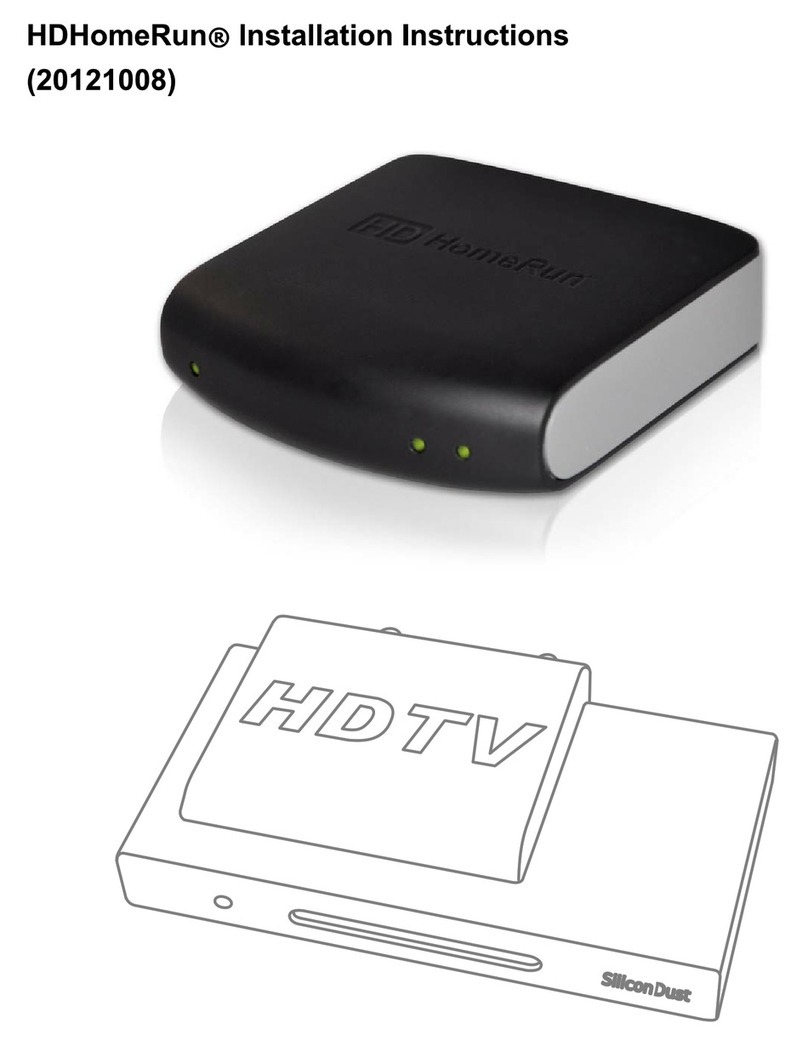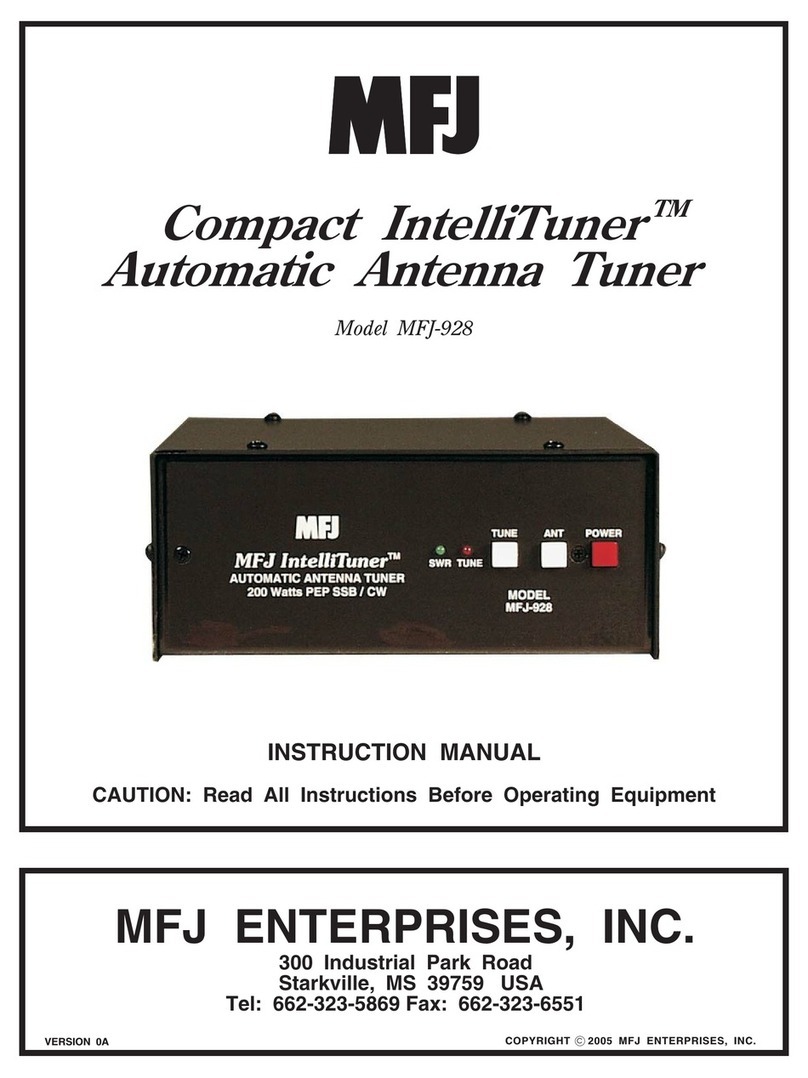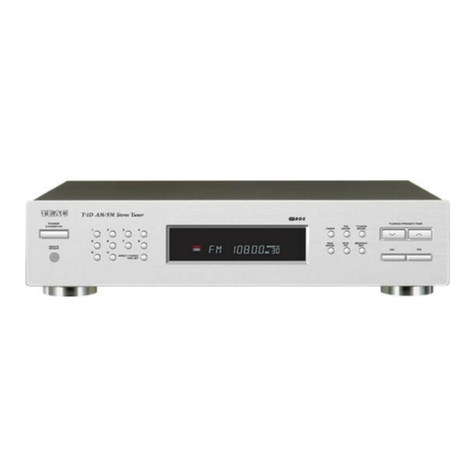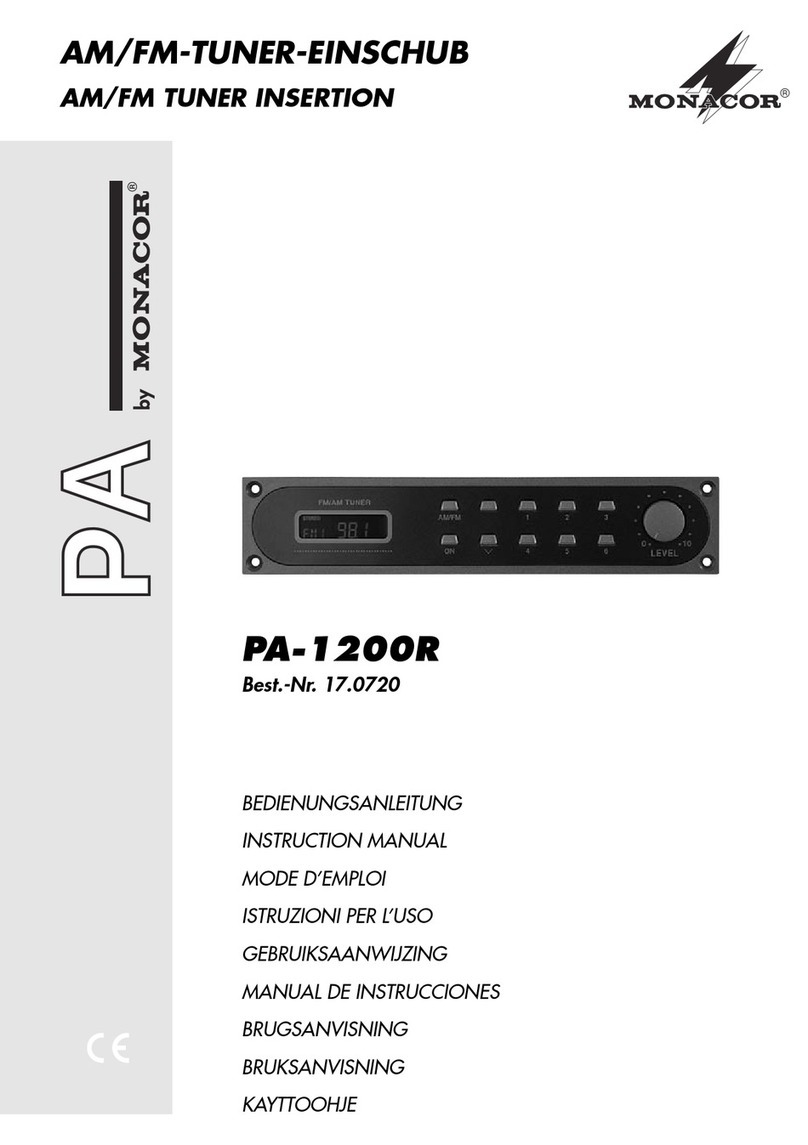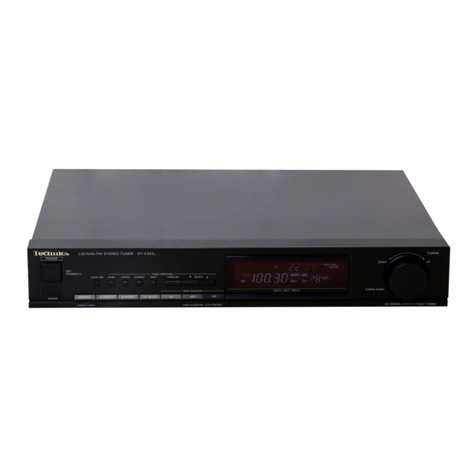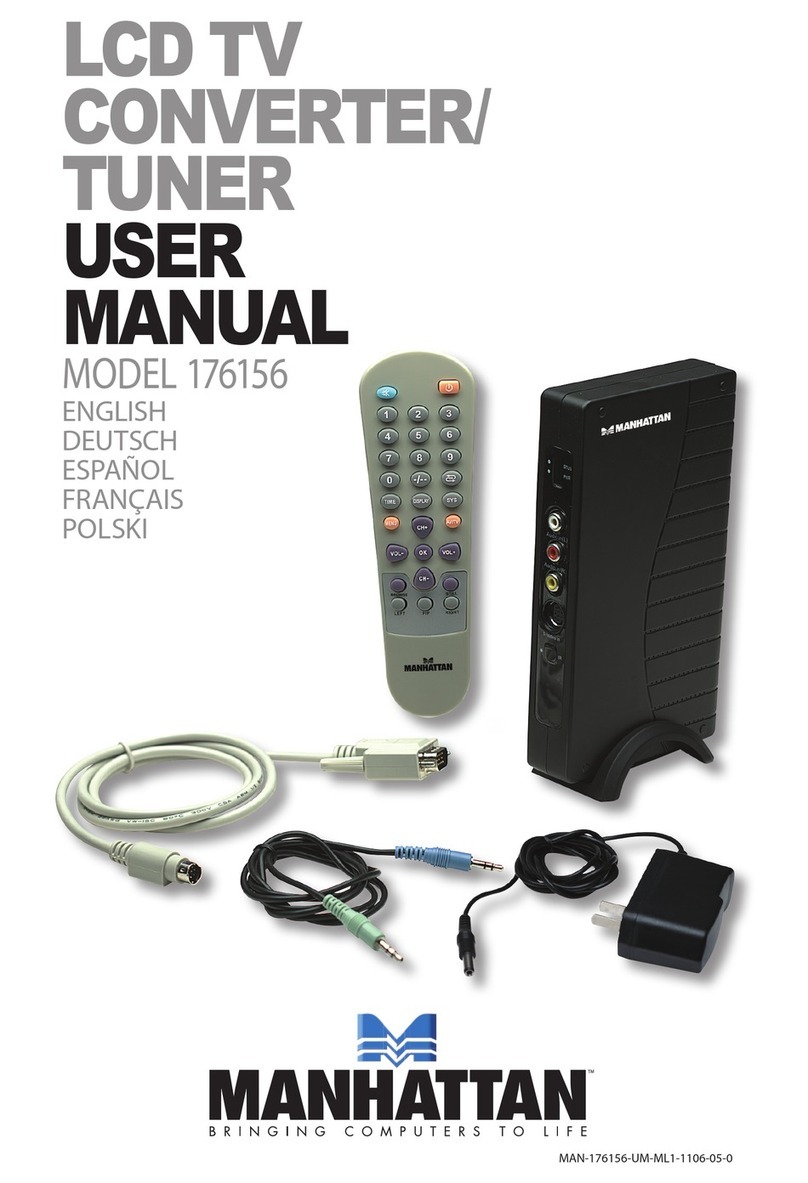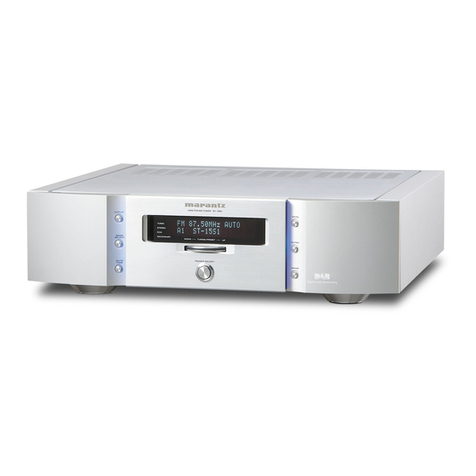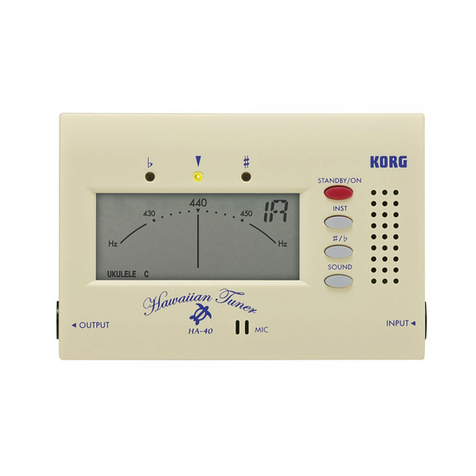
Installation
Your AT-100Pro tuner is intended for indoor use only; it is not water resistant. If you use it
outdoors (Field Day, for example) you must protect it from rain. The AT-100Pro is designed for
use with coax-fed antennas. If you wish to use it with longwires or antennas fed with a balanced
transmission line (e.g., ladder line), an external balun is required; the LDG RBA4:1 or RBA-1:1 is
ideal.
Always turn your radio off before plugging or unplugging anything. Your radio may be damaged if
you connect or disconnect a cable with the unit powered up. Note that some radios do not power
down the tuner even when the radio is turned off. To be safe, unplug the power connector before
plugging or unplugging anything.
Connect the HF antenna jack on your transmitter or transceiver to the Tx jack on the back of your
AT-100Pro tuner using a coax jumper with standard PL-259 plugs (not provided). Properly
soldered connectors will be far more satisfactory and reliable than crimp-on or “solderless”
connectors. Attach your antenna lead-in coax to either the Ant 1 or Ant 2 jack on the back of your
AT-100Pro tuner. You will select the appropriate antenna from the front panel (see Operating
Instructions).
Your AT-100Pro can interface directly with several popular transceivers. For Icom radios, it will
enable their “Tune” button to start a tuning cycle and provide power to the tuner.
For Icom radios that are AH-3 or AH-4 compatible, connect the white molex connector into the
radio’s tuner port. The power and radio plugs then connect to the tuner. The tuning process can
start by either pressing the tune button on the tuner or the radio.
For Yaesu FT-897 and 857, use the Y-ACC cable and plug the red end marked “Radio” into the
radio’s ACC port. Connect the black end marked “Tuner” into the tuner’s interface jack. The radio
does not supply power to the tuner. The tune button on the tuner is used for starting the tune
process.
If you are not using an Icom interface for powering the tuner, connect your AT-100Pro to a source
of DC power capable of providing 11 – 16 volts DC at 500 mA, using the provided 2.5x5.5mm
coaxial cable (center positive). If your radio is powered by 12 VDC, you can use the same power
supply for the AT-100Pro, providing the power supply can source the extra 500 mA required by
the tuner during a tuning cycle.
Grounding your tuner will enhance its performance and safety. LDG recommends that you connect
your tuner to a suitable ground; a common ground rod connected to buried radials is preferred, but
a single ground rod, a cold water pipe or the screw that holds the cover on an AC outlet can
provide a serviceable ground. LDG strongly recommends that you use a properly installed, high
quality lightning arrestor on all antenna cables.
7
